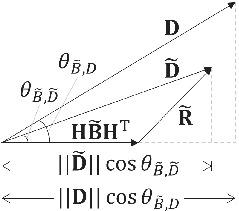当前位置:
X-MOL 学术
›
Q. J. R. Meteorol. Soc.
›
论文详情
Our official English website, www.x-mol.net, welcomes your
feedback! (Note: you will need to create a separate account there.)
Framework for the comparison of a priori and a posteriori error variance estimation and tuning schemes
Quarterly Journal of the Royal Meteorological Society ( IF 3.0 ) Pub Date : 2020-06-15 , DOI: 10.1002/qj.3805 Michael Sitwell 1 , Richard Ménard 1
Quarterly Journal of the Royal Meteorological Society ( IF 3.0 ) Pub Date : 2020-06-15 , DOI: 10.1002/qj.3805 Michael Sitwell 1 , Richard Ménard 1
Affiliation

|
The performance of an assimilation system is strongly dependent on the quality of the error statistics used. A number of error statistics estimation and tuning methods have previously been developed to better assess and determine these statistics. Many of these are a posteriori methods which make use of quantities calculated during the assimilation procedure, while other a priori methods do not require information from the assimilation. In this study, we develop a conceptual framework that relates these methods when applied to error variance determination, where each method is associated with the minimization of a particular cost function. The minimization of these cost functions describes a fitting procedure that fits parts of the prescribed modelled innovation covariance to its observed values. Each method must in some way separate the innovation covariance into its contributions from the background and the observations, which are then used in the fitting procedure. It is shown that the examined a posteriori methods use the analysis filter to make this separation and that the minimization of their associated cost functions is done implicitly within the tuning procedure. Analytical expressions for the expectation value and variance of estimates for error variance scaling parameters are determined for each method. The expressions for the expectation values of these estimates show that the accuracy of each method is dependent on its ability to separate the background from the observation contributions to the innovation covariance. This separability is quantified by use of the Frobenius inner product between the background‐ and observation‐error covariances, which additionally allows for geometric interpretations of the covariances to be made. Comparisons between variance parameter estimates from different methods are made for the case of a 1D periodic domain.
中文翻译:

先验误差和后验误差方差估计和调整方案比较的框架
同化系统的性能在很大程度上取决于所使用的错误统计信息的质量。先前已经开发了许多错误统计估计和调整方法,以更好地评估和确定这些统计。其中许多是后验方法,它们利用同化过程中计算出的数量,而其他先验方法方法不需要同化的信息。在这项研究中,我们建立了一个概念框架,将这些方法应用于误差方差确定,其中每种方法都与特定成本函数的最小化有关。这些成本函数的最小值描述了一种拟合过程,该过程将指定的建模创新协方差的部分拟合为其观测值。每种方法都必须以某种方式将创新协方差从背景和观测值中分离出来,然后用于拟合过程。结果表明,检查后验方法使用分析过滤器进行这种分离,并且在调整过程中隐式地完成了与它们相关的成本函数的最小化。为每种方法确定期望值的估计表达式和误差方差缩放参数的估计值的方差。这些估计的期望值的表达式表明,每种方法的准确性取决于其将背景与对创新协方差的观测贡献分开的能力。这种可分离性通过使用背景误差和观察误差协方差之间的Frobenius内积来量化,该内积还允许对协方差进行几何解释。
更新日期:2020-06-15
中文翻译:

先验误差和后验误差方差估计和调整方案比较的框架
同化系统的性能在很大程度上取决于所使用的错误统计信息的质量。先前已经开发了许多错误统计估计和调整方法,以更好地评估和确定这些统计。其中许多是后验方法,它们利用同化过程中计算出的数量,而其他先验方法方法不需要同化的信息。在这项研究中,我们建立了一个概念框架,将这些方法应用于误差方差确定,其中每种方法都与特定成本函数的最小化有关。这些成本函数的最小值描述了一种拟合过程,该过程将指定的建模创新协方差的部分拟合为其观测值。每种方法都必须以某种方式将创新协方差从背景和观测值中分离出来,然后用于拟合过程。结果表明,检查后验方法使用分析过滤器进行这种分离,并且在调整过程中隐式地完成了与它们相关的成本函数的最小化。为每种方法确定期望值的估计表达式和误差方差缩放参数的估计值的方差。这些估计的期望值的表达式表明,每种方法的准确性取决于其将背景与对创新协方差的观测贡献分开的能力。这种可分离性通过使用背景误差和观察误差协方差之间的Frobenius内积来量化,该内积还允许对协方差进行几何解释。











































 京公网安备 11010802027423号
京公网安备 11010802027423号